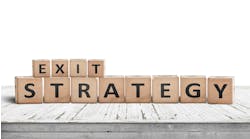CHICAGO — Auto repair shops that want to gain a competitive advantage should use productivity math to measure – and ultimately improve – their business results. That’s the clear message delivered by Bob Greenwood, an accredited automotive manager (AAM) and president and CEO of Automotive Aftermarket E-Learning Centre Ltd. (AAEC).
Greenwood presented the class, “Elevating Service Excellence and How Productivity Mathematics Measures Service Results” to an attentive audience of shop owners, managers and service advisors at NACE Automechanika Chicago on July 27.
Taking a productivity measurement of a team helps shops identify their client service problems, Greenwood said. Measuring the entire shop as a team helps to direct managers to focus on processes that are failing. When processes fail, client service levels decrease dramatically and net income drops or disappears.
“The mechanic trade days – when you only needed skilled and well-trained technicians to guarantee success in the auto care industry – are over and are not going to return,” Greenwood said. “While it’s still important to have skilled and well-trained technicians, successful shop owners today need to measure carefully their shop’s progress to make sure it’s on the right path to a successful future.”
To achieve this, Greenwood discussed four key topics. The first was the five building blocks required to ensure change can take place in the shop. Just like a successful person needs to learn and react and adopt to change over the course of their life, a successful shop needs to be flexible enough to react to all the changes that a business encounters, he said. Shops that can’t change to shifting business trends and customer needs will suffer and eventually fail.
Greenwood also discussed several business procedures and formulas that focus on net income development.
He presented a detailed discussion about measuring shop site efficiency, which includes what it is, how it’s calculated and what it tells you about your team. “Knowing and understanding your shop’s key financial numbers is not enough,” Greenwood said. You can use those numbers to learn more about your team and your business.”
He also provided a clear analysis of measuring technician wages vs profit generated.
“In order for your shop to succeed, it not only needs to generate enough profit to cover all your fixed expenses and build for your future,” he said. “It needs to pay your techs a healthy wage and solid benefits so that your shop will be the one in town where all the best technicians want to work.” But those all-important wages and benefits cannot go out of alignment with the profit generated, or the business will suffer.
Greenwood emphasized it’s important for shop owners to learn the key attributes that focus on net income development. “This is not just the standard sales information that the industry has traditionally taught you. For example, 60 percent to 65 percent of the work coming through the average shop's door does not create $1 of net profit. It is only a sale and gross profit, so what do you need to do to fix that?
Shop owners and managers need to understand the math behind competitive pricing for profit. For example, are you working hard or are you working smart, he said.
Greenwood also used simple math to help attendees understand the reality of one hour of actual wage cost to the business. “After learning this, you will be shocked by what you can afford,” he said. “If you have accurate numbers, everything can be proven mathematically, and as we all know, math does not lie. It’s important to have a clear business plan and a philosophy for your business, but does the math back it up?”
Greenwood is a noted authority on improving shop operations. He has more than 39 years of business management experience in the independent sector of the automotive aftermarket industry, consulting independent retail shops on all facets of their business operations.
Greenwood’s company, AAEC, focuses on providing business management resources and development for the independent sector of the aftermarket industry. AAEC content and technology is recognized as part of the curriculum of the Fixed Operations diploma and the aftermarket degree courses taken at the Automotive Business School of Canada in Georgian College located in Barrie Ontario Canada. This school is the only college in Canada that offers an automotive business education.
AAEC also is recognized by the Automotive Management Institute (AMI), located in North Richland Hills, Texas, allowing 80 credits for successful completion of the AAEC E-Learning portion of the site towards the 120 credits required to obtain the reputable Accredited Automotive Manager (AAM) designation. Greenwood is one of 150 worldwide AMI-approved instructors.




